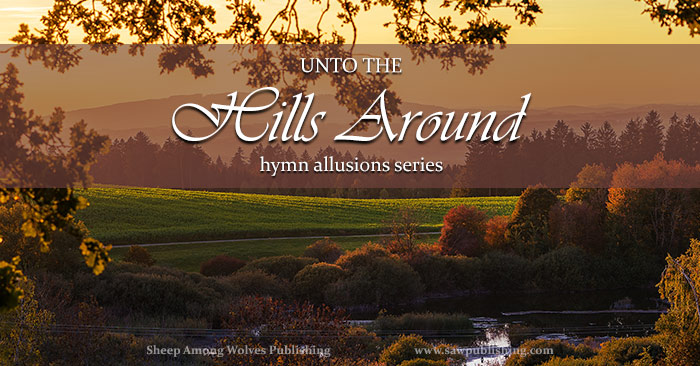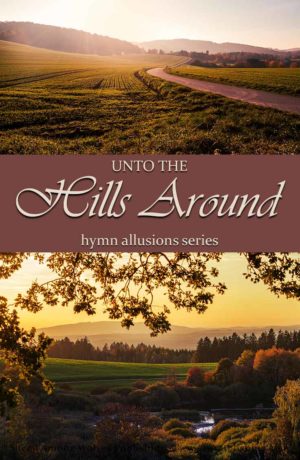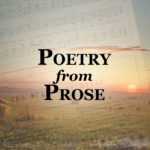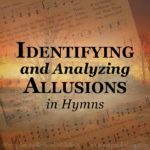Unto the Hills Around
This series on Scripture Allusions in Hymns takes a look at some outstanding hymns based on verses or passages of Scripture, and the aspects of greatness they display. For a fuller explanation of the series and its topic, check out our post entitled Identifying and Analyzing Hymn Allusions.

Are you a person who finds comfort from the Psalms, with their wealth of promises and assurances of God’s protection and deliverance? Or perhaps you are a person in need of consolation and scarcely knowing where to turn.
“I will lift up mine eyes unto the hills, from whence cometh my help. My help cometh from the LORD, which made heaven and earth.” ~ Psalm 121:1,2
Today’s post looks at “Unto the Hills Around,” a faithful paraphrase of Psalm 121 by John Campbell, which captures the comfort and beauty of the Psalm in a form which is easily memorized and sung. Download our complimentary PDF of the hymn and Psalm 121 in parallel passages.
Hymn Details
Name: Unto the Hills Around
Author: John D. Campbell
Paraphrased Passage: Psalm 121
Highlights: “Unto the Hills Around” was part of a meterized version of the Psalms compiled and largely written by one of Queen Victoria’s sons-in-law, John Campbell, Duke of Argyll and Marquess of Lorne. Titled, “The Book of Psalms: Literally Rendered in Verse,” the volume was written because, as Campbell notes in his preface, many of the words of the Authorized Version (another name for the 1650 Scottish Psalter) “which might formerly have been considered as rhyming together, cannot with modern pronunciation be now held to do so; and believing that the want of true rhyme is often not agreeable, it seems probable that there is room for a new version.” This Psalm appears as the “second version” of Psalm 121 in Campbell’s book, and is consequently not written in Common Metre as the majority of the Psalms in this volume are.
Faithfulness to the Text
“Unto the Hills Around” is an exceptional example of a faithful meterization. Perhaps more noticeable than the closeness to the actual words of Psalm 121, is the remarkable sameness in spirit and flavour. Because of the nature of paraphrasing, this is difficult to accomplish. Oftentimes, if you take a Psalm you really love, which is beautiful and flowing in the original, and look for a meterized version of it, you will end up disappointed because the beauty was lost in “translation.” The content may be astoundingly close to the original, but the spirit has been altered. This is very far from the truth with this paraphrase. Rather, the author has been able to capture the beauty and flow of the original, partially because of his evident familiarity with the style of the King James Version of the Bible. This familiarity renders the paraphrase a satisfaction to anyone who appreciates the original.
Metre and Rhyming Choices
Part of the reason for the remarkable faithfulness of style lies in the metre and rhyming choices the author has made. We discussed in a previous post that simpler rhyming words and longer lines often hold the key to paraphrases which are both faithful and beautiful.
This is particularly noteworthy in this hymn. If you look closely in verse one above, you can see that the combination of these two choices has been employed to the greatest advantage in this meterized Psalm. Line one and line three don’t rhyme at all, and are quite long at ten syllables apiece, giving fully thirteen syllables (lines one and two) before the first rhyming word, a pattern repeated in lines three and four. The closing two lines that rhyme with each other are also ten syllables long, allowing for a tremendous amount of freedom in the paraphrase, which is especially important for this particular Psalm, since it is so light and flowing in the original that the cramped, abbreviated style necessary for Common Metre would destroy the original feel.
It is also significant that the four rhyming words used in each verse are quite simple and obvious rhymes that have plenty of appropriate matches in the English language. Complex or obscure rhymes can often dictate the direction of the poem, so in cases like this the wisest choice is a simpler rhyme.
 Flow, Style and Language
Flow, Style and Language
The metrical choices which produced the exceptional faithfulness in this hymn, also allowed the flow and style to be what they are. This is chiefly done by following the flow and style of the Psalm, as we mentioned above.
Campbell has somehow been able to transfer to his hymn the natural smoothness we find in the opening verse of Psalm 121: “I will lift up mine eyes unto the hills, from whence cometh my help.”
Read his first stanza as if it were prose: “Unto the hills around do I lift up my longing eyes. O whence for me shall my salvation come, from whence arise? From God, the Lord doth come my certain aid, from God, the Lord, who heav’n and earth hath made.” See how he has kept the light, smooth flow even while taking it from prose into poetry. Stanza one is undeniably the smoothest in this respect, but the entire hymn largely follows this pattern.
Along with his care in following the style of the Psalms, it is clear that the author is familiar with other meterized versions. Take a look at this verse from the 1650 Scottish Psalter:
I to the hills will lift mine eyes,
From whence doth come mine aid.
My safety cometh from the Lord,
Who heav’n and earth hath made.
Of course, it is understandable, and even desirable, that two faithful meterizations should be very similar in the finished product, but it is also important to recognize that the style of past versions will often impact the style and language of later ones.
“Unto the Hills Around”
Psalm 121 is a favourite of mine. I have it hanging up over my bed, and sometimes I recite it to myself as I’m falling asleep. The soothing flow and comforting words are pleasant to hear. And because of John Campbell’s faithfulness and carefulness in paraphrasing, I can sing the Psalm as well, and remember once again everything that it expresses, finding comfort in the surety that God will preserve our “going out” and our “coming in”—“from this time forth, and even forevermore.”
This post may have been shared with the linkups listed here.
You might also like:

Faithful meterizations of Scripture are a great example of Bible concepts captured in a way that our minds will remember.




That is a really neat post! I think we don’t sing enough songs and I didn’t know the technical musical aspects of metering a Psalm into a Psalter at all! Thanks.
We love singing Psalms at our house. I’m glad that you found the post helpful. There is a wealth of spiritual knowledge in meterized psalms.